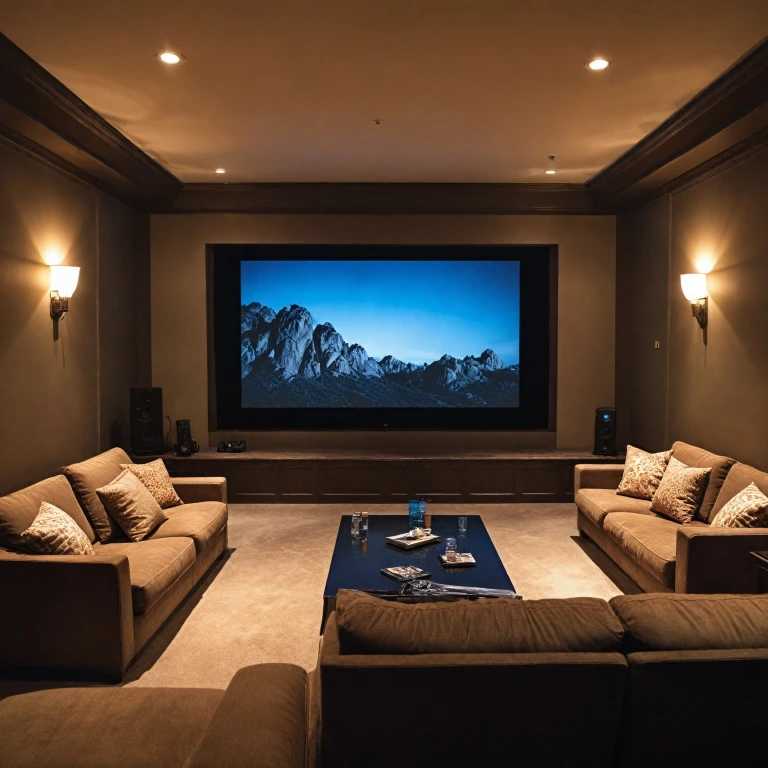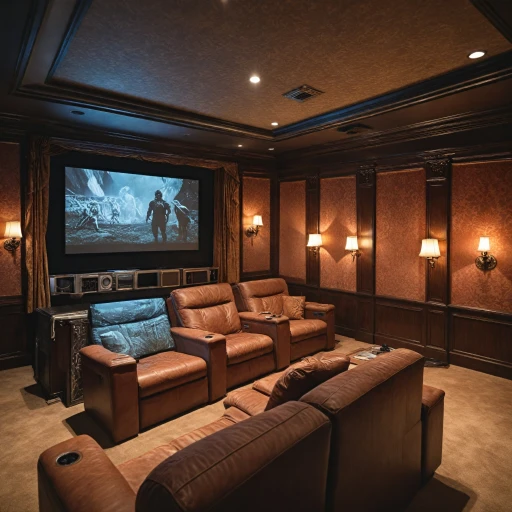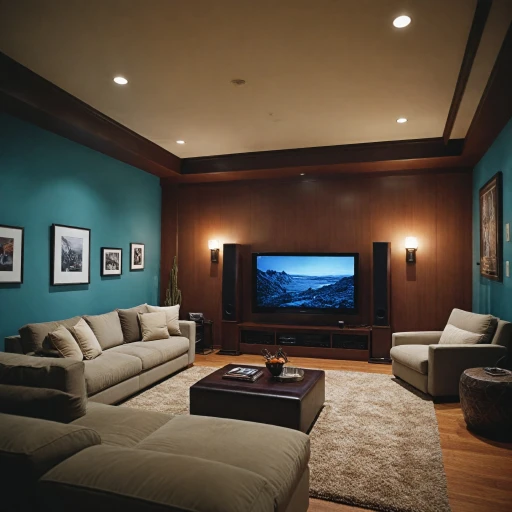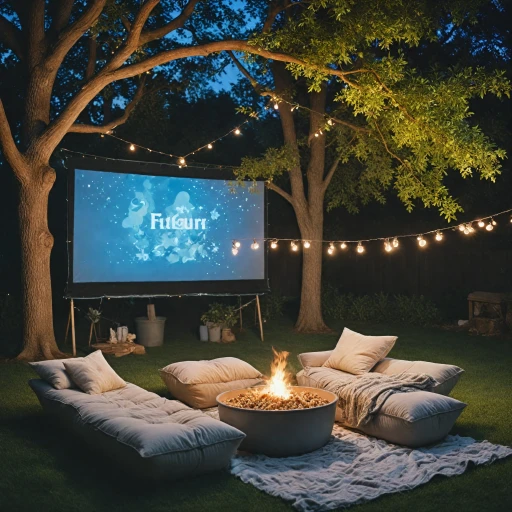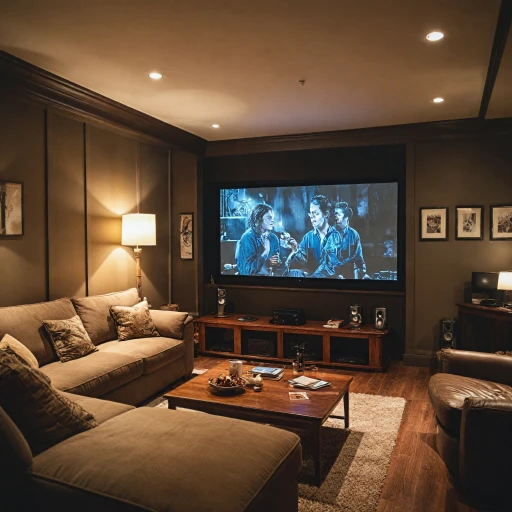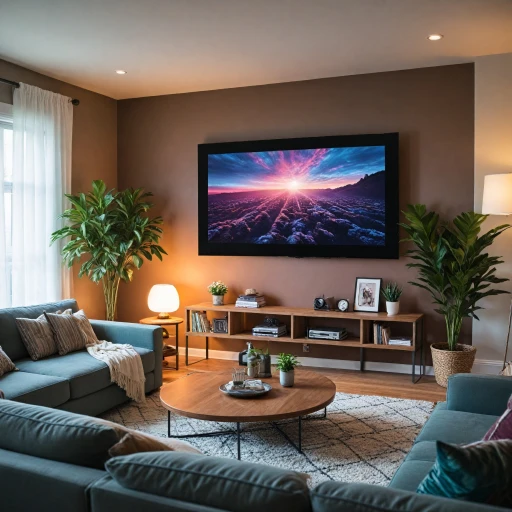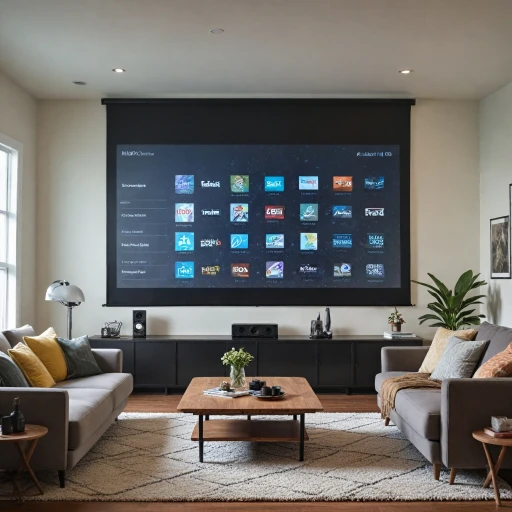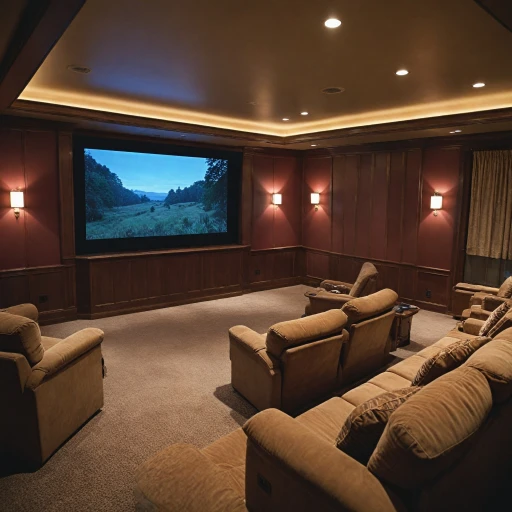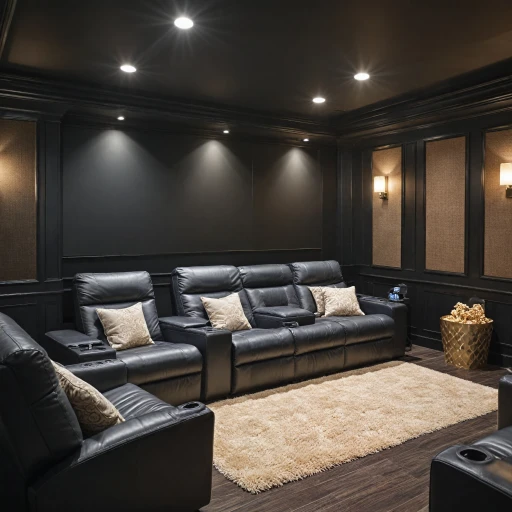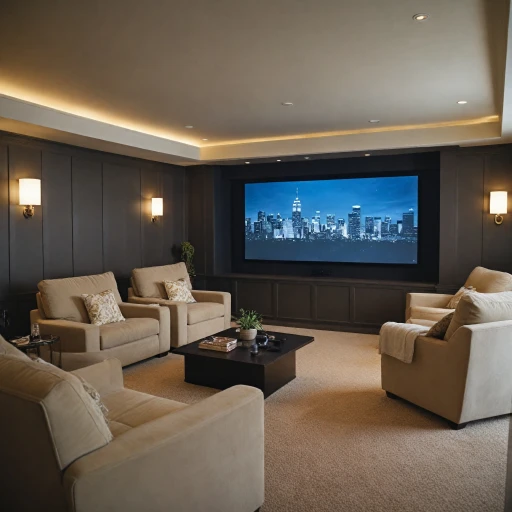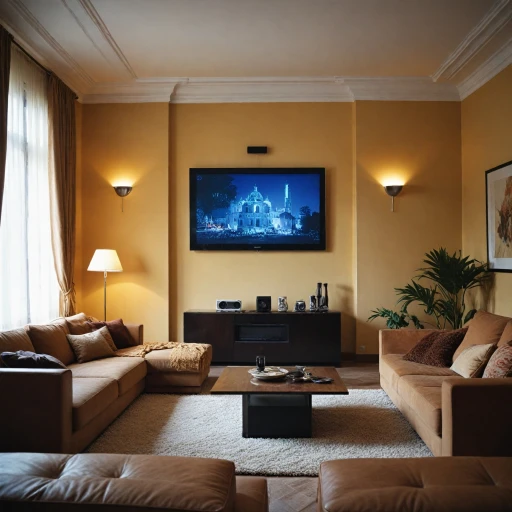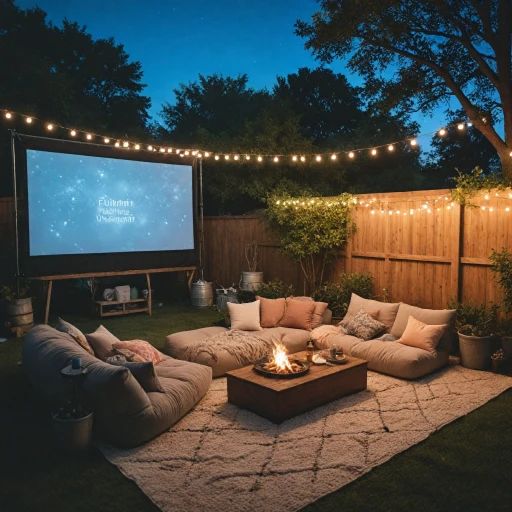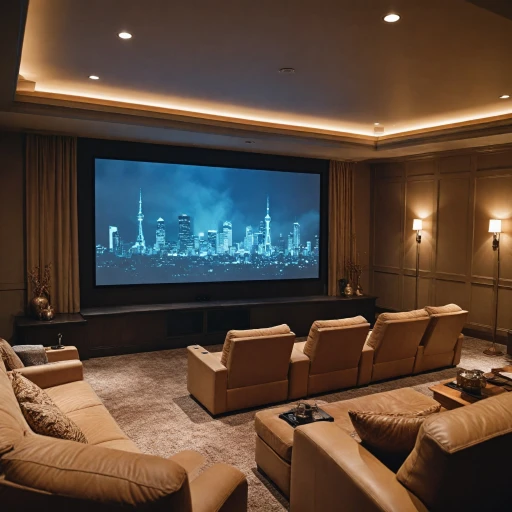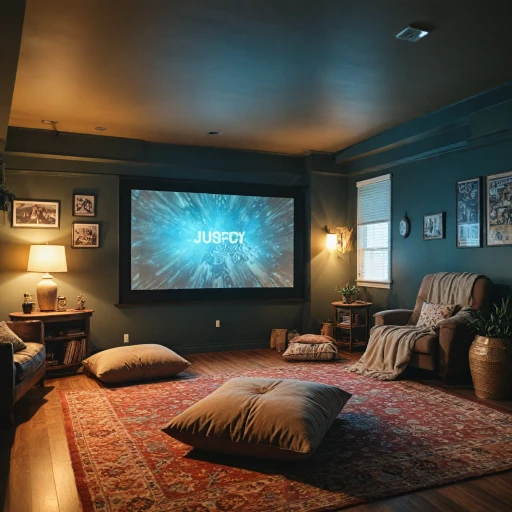
Understanding Screen Types
Decoding Different Screen Types for Home Theaters
Understanding the various kinds of screens available is essential for creating an optimal home theater experience. The plethora of options can be daunting, but breaking them down into categories simplifies the decision-making process.- Fixed Frame Screens: These are a popular choice for dedicated home theater rooms. They provide a flat, tensioned surface that ensures the projected image displays flawlessly. The frame, often made of materials like silver or black velvet, keeps the screen taut, creating a seamless viewing experience.
- Portable Screens: If you need flexibility, portable projector screens are ideal. These come in designs that are easy to set up and take down. While they may not offer the permanence of fixed screens, their mobility makes them a great choice for outdoor movie nights or spaces where the projector screen can’t be permanently installed.
- Wall Screens: These projection screens are directly mounted on the wall and offer a balance between portability and stability. They are often retractable, allowing you to roll them up when not in use, making them suitable for multi-purpose rooms.
Material Matters: Screen Fabrics and Their Impact
The Significance of Screen Fabrics
Choosing the right screen material is pivotal for optimizing the performance of your projector screens. The choice impacts image quality, color accuracy, and the overall viewing experience. Let's delve into the different options:
- White Material: A popular choice for home theaters, these screens provide bright images and accurate colors, particularly in controlled lighting environments.
- Silver Material: This material is often used for high gain screens, offering enhanced brightness and contrast, making it suitable for 3D or HDR projection.
- Black Material: Ideal for outdoor or rooms with high ambient light, these screens enhance contrast and are excellent for high-end projection setups.
Screen fabrics have different dynamic properties; some are designed specifically for specific aspect ratios or viewing angles. Consider what type of material suits your projector and viewing needs.
For further insights, you might explore this guide on choosing the right small projector screen for your home theater. This will help in matching the perfect screen to your needs, ensuring you maximize your home theater's potential.
Size and Aspect Ratio: Finding the Right Fit
Finding the Perfect Dimension for a Stunning Projector Setup
Selecting the right size and aspect ratio is crucial for optimizing the viewing experience with your home theater projector. The screen's dimensions should complement both the available space on your wall and the optimal viewing distance. Consider your room's dimensions and seating arrangement to ensure maximum comfort without compromising visual quality.
The aspect ratio is another element to consider. It refers to the width and height proportionality of the screen. The most popular ratios for home theater use are 16:9 and 2.35:1. A 16:9 aspect ratio suits various content types, including movies, sports, and gaming, making it highly versatile for general home use. Meanwhile, a 2.35:1 aspect ratio provides a more cinematic experience and is ideal for movie enthusiasts, eliminating those black bars often seen at the top and bottom on wider content.
When deciding on screen size, it's crucial to balance between the projector's capabilities, the available wall space, and preferred viewing angle. Short throw and ultra short throw projectors enable close placement to the screen without sacrificing image size, making them ideal for smaller rooms. If space allows, a larger screen can elevate the movie theater sensation. Conversely, a compact, portable projector offers versatility, especially in multi-purpose spaces.
Ultimately, choosing the correct combination of size and aspect ratio for your projection setup enhances not just the visual but the immersive experience. Interested in more ways to boost your home theater experience? Explore integrating Dolby Atmos sound to match your video�s exceptional quality.
Gain and Viewing Angles: Enhancing Image Quality
Optimizing Your Viewing Experience
When setting up a home theater, perfecting the viewing angle, and understanding gain are pivotal to enhancing image quality. These two factors can significantly influence your viewing experience, affecting how images appear on the projector screen from different angles and under various lighting conditions.
The term "gain" refers to the amount of light reflected from the projection screen back to the audience. A higher gain implies a brighter image, which can benefit spaces with ambient light. However, it might result in narrower viewing angles, making it less ideal for a wide seating arrangement. Choosing a screen with the right gain depends on your home theater setup and viewing preferences.
Meanwhile, the viewing angle determines how far off-center you can sit and still see a clear, undistorted image. Fixed frame and portable projector screens often come with specifications that cater to various angles, ensuring optimal image quality from different seating positions. If your audience spans a wide room, opting for a screen with a broader viewing angle can ensure everyone enjoys a crisp and clear picture.
When selecting projection screens, considering the gain and viewing angles in tandem with your interior and lighting will guarantee you have the best movie experience at home. Exploring options like frame projector or even silver ticket screens could also provide the enhanced high-quality viewing you desire.
